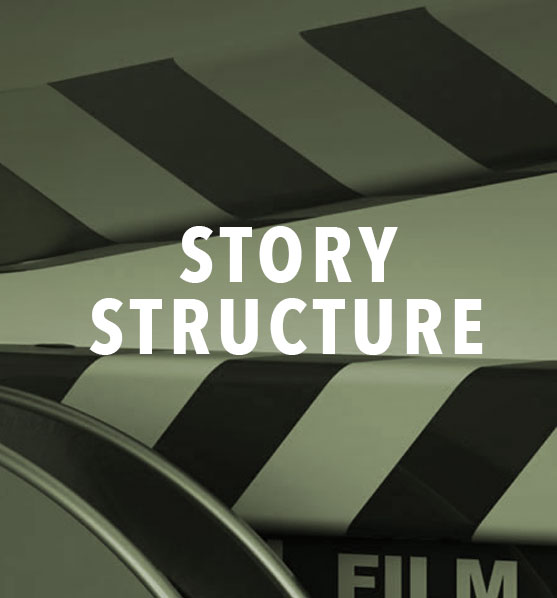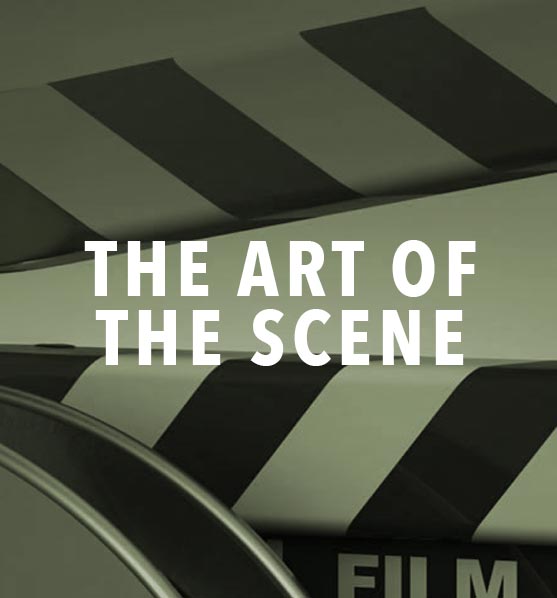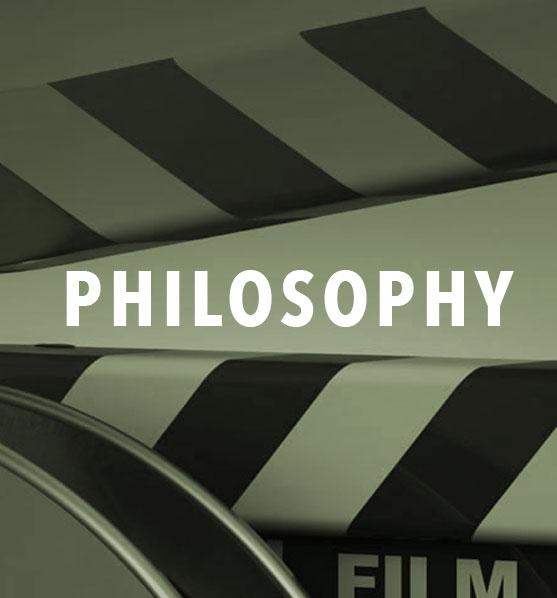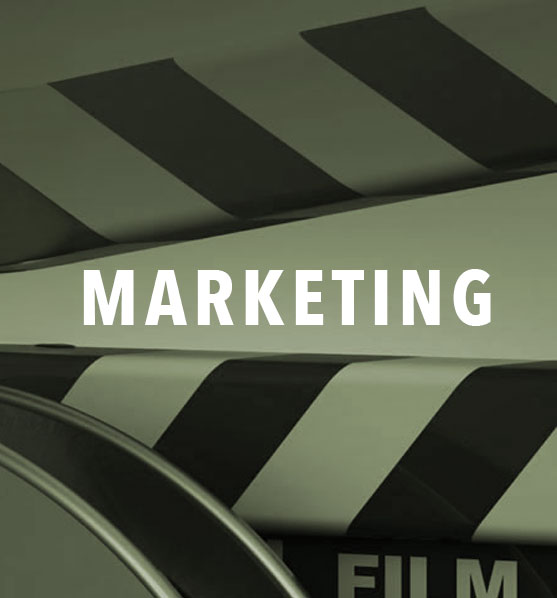QUICK SHEETS
Reference sheets from our round-table discussions
QUICK SHEETS
Reference sheets from our round-table discussions
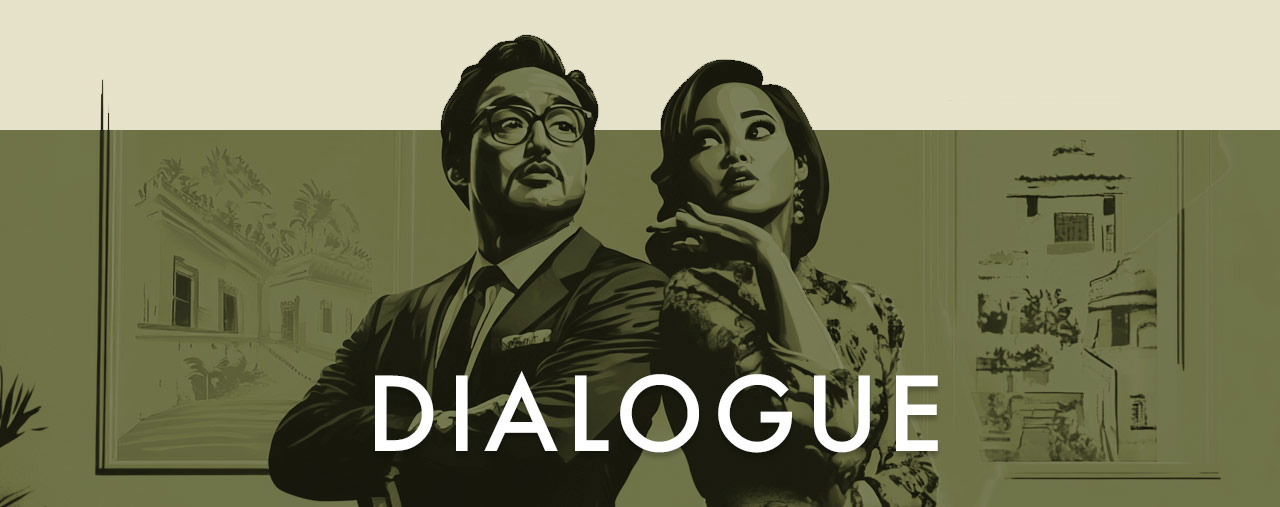
Screenwriting dialogue tips.
The Hollywood Writers Group Quick Sheets are a free public resource to support screenwriters in their creative endeavors. We hope you find our dialogue tips helpful, and wish you the best on your own unique journey.
Download a free copy of this quick sheet below.
“Isn’t everything we do in life a way to be loved a little more?”
Interested in updates to our quick sheets? Scroll to the bottom of this page.
New quick sheets are released every 2 weeks.
DIALOGUE
Table of Contents
Elements of Great Dialogue
Screenwriting dialogue tips.
Great screenplay dialogue doesn’t just sound good—it serves the story, builds character, and engages audiences emotionally. Here are the fundamental elements of great dialogue in screenwriting:
1. Clear Purpose
Every line should serve a specific narrative or emotional purpose:
- Advance plot
- Reveal character
- Convey subtext
- Set the tone or atmosphere
- Establish or escalate conflict
Tip:
Ask yourself, “What purpose does this line serve?” If unclear, consider cutting or revising it.
2. Subtext & Implication
Great dialogue thrives on what isn’t explicitly stated—characters rarely speak exactly what’s on their minds.
- People hide their true emotions.
- Characters have hidden agendas or inner conflicts.
- Meaning lies between the lines, making dialogue rich and realistic.
Example:
Instead of saying,
“I’m angry because you betrayed me,”
say:
“You know, I trusted you. Lesson learned.”
3. Authentic Character Voice
Each character’s speech reflects their background, personality, motivations, and emotional state:
- Dialogue should vary distinctly between characters.
- Reflect unique rhythms, speech patterns, vocabulary, and attitudes.
- Characters don’t all sound alike.
Example:
- A lawyer speaks formally, cautiously.
- A teenager uses slang, short sentences, humor.
4. Concise, Economical Language
Great dialogue is precise and purposeful, with no wasted words:
- Characters speak clearly, avoiding unnecessary exposition.
- Shorter lines often carry more impact.
- Dialogue feels real but tighter than natural speech.
Example:
Instead of lengthy explanations,
“I’ve known you my entire life, and this betrayal hurts deeply because of our friendship,”
use:
“After all these years? Really?”
5. Conflict & Tension
Engaging dialogue involves conflict, disagreement, or tension:
- Characters have conflicting goals or emotions.
- Dialogue escalates organically.
- Conflict can be subtle (emotional tension) or overt (argument, threats).
Example:
“Stop pretending you don’t know what you did.”
“And stop pretending you’re the victim here.”
6. Emotional Authenticity
Characters express believable emotions:
- Dialogue matches emotional context realistically.
- Characters avoid overly dramatic or artificial expressions.
- Feelings are conveyed naturally through tone, word choice, hesitation, and pauses.
Example:
Instead of dramatic, artificial lines,
“My heart has shattered into a thousand pieces,”
use something understated:
“I thought things would feel different. They don’t.”
7. Rhythm & Pacing
Effective dialogue has a rhythm, cadence, or flow that matches the emotional energy and narrative pacing:
- Faster dialogue increases tension or excitement.
- Slower, reflective dialogue creates emotional depth or suspense.
- Rhythm should vary within scenes for emotional effect.
Example:
Fast, tense exchanges during arguments contrast with slow, meaningful pauses in emotional revelations.
8. Natural Realism
Dialogue should sound real yet better:
- Characters speak authentically—not perfectly grammatical.
- Include contractions, pauses, interruptions, slang.
- Dialogue is realistic but avoids filler words (“uh,” “um,” etc.) unless for deliberate effect.
Example:
Instead of overly polished speech,
“Would you mind handing me the file from your desk, please?”
use:
“Hey, toss me that file?”
9. Visual Storytelling
Great dialogue complements visuals:
- Not overly explanatory or descriptive.
- Dialogue conveys meaning not already visually clear.
- Supports actions, visuals, and settings seamlessly.
Example:
If a character is visibly angry, they don’t need to say, “I’m angry.” Instead,
“Give me one good reason not to walk out right now.”
10. Memorable Lines & Quotability
Effective dialogue is memorable without sounding forced or unnatural:
- Lines resonate emotionally or intellectually.
- Quotes sum up characters or themes powerfully.
Examples:
- “You can’t handle the truth!” (A Few Good Men)
- “I drink your milkshake!” (There Will Be Blood)
Quick Checklist for Great Dialogue:
- Does it have clear purpose (character, story, theme)?
- Is it rich with subtext and implication?
- Does it reflect authentic character voice?
- Is it concise and economical?
- Does it establish or escalate conflict and tension?
- Does it express emotion realistically?
- Is the rhythm and pacing engaging?
- Does it avoid unnecessary exposition (show, don’t tell)?
- Does it support visual storytelling effectively?
- Is it memorable or quotable?
Types of Dialogue
Screenwriting dialogue tips.
In screenwriting, dialogue isn’t one-dimensional—it varies significantly based on purpose, intent, delivery, and emotional context. Understanding these different types of dialogue allows you to use each effectively to serve your story.
Here are the main types of screenplay dialogue, clearly explained with examples:
1. Expository Dialogue
Purpose:
Reveals essential story information, context, or backstory to the audience.
Example:
“Ever since the war ended, nothing’s been the same around here.”
When to use:
- To quickly provide audience context.
- To establish the situation or backstory clearly.
Caution:
Avoid obvious or unnatural exposition (“As you know…”). Keep it subtle and organic.
2. Conflict Dialogue (Confrontational)
Purpose:
Dialogue expressing disagreement, tension, or conflict between characters.
Example:
“I told you to stay out of my business.”
“And I told you not to drag me into it!”
When to use:
- Scenes where characters clash directly.
- To escalate emotional or narrative tension quickly.
3. Subtextual Dialogue
Purpose:
Dialogue that implies meaning rather than explicitly stating it. Characters don’t directly express their true intentions.
Example:
“I saw your friend again last night.”
(The subtext implies jealousy, suspicion, or betrayal without openly stating it.)
When to use:
- Emotional nuance.
- Character motives are hidden or layered.
4. Reflective Dialogue
Purpose:
Dialogue revealing character introspection, emotions, or inner thoughts clearly.
Example:
“I’ve spent my whole life running from the past. Maybe it’s time to stop.”
When to use:
- Scenes of emotional growth or decision-making.
- Quiet, contemplative moments revealing internal struggles.
5. Naturalistic (Realistic) Dialogue
Purpose:
Dialogue resembling authentic, everyday speech patterns, realistic interactions, informal language.
Example:
“Hey, uh… did you, you know—grab the thing?”
“Yeah, no—I mean, kind of.”
When to use:
- Realistic, conversational scenes.
- Moments requiring believability and relatability.
6. Thematic Dialogue
Purpose:
Dialogue explicitly reflecting or reinforcing the film’s themes.
Example:
“Hope is a dangerous thing. Hope can drive a man insane.” (The Shawshank Redemption)
When to use:
- To clearly highlight themes.
- Scenes underscoring larger messages or ideas.
7. Stylized Dialogue
Purpose:
Highly artistic or exaggerated dialogue, intentionally crafted for rhythm, poetry, or dramatic flair.
Example:
“Gentlemen, you can’t fight in here! This is the War Room!” (Dr. Strangelove)
When to use:
- Heightened realities, satire, or unique stylistic visions.
- Scenes needing memorable, quotable lines.
8. Voice-Over (V.O.)
Purpose:
Dialogue spoken by a character not physically present in the scene, often reflective or explanatory.
Example:
(Voice-over)
“I didn’t realize it then, but that summer would change everything.”
When to use:
- Providing narrative insight or emotional commentary.
- Bridging transitions, setting context, or giving personal reflections.
9. Off-Screen (O.S.) Dialogue
Purpose:
Dialogue from characters physically present but unseen by the camera at that moment.
Example:
“Hey! Are you coming down soon?” (O.S.)
When to use:
- Building suspense or mystery.
- Practical, realistic spatial interactions.
10. Monologues (or Speeches)
Purpose:
A longer, uninterrupted dialogue segment by a single character expressing detailed emotion, ideas, or revelations.
Example:
Al Pacino’s motivational speech in Any Given Sunday (“Life is a game of inches.”).
When to use:
- Dramatic turning points.
- Climactic emotional or thematic moments.
Quick Reference Chart
|
Dialogue Type |
Main Purpose / Use |
Example |
|
Expository |
Reveals essential info clearly |
“After Mom left, Dad never recovered.” |
|
Conflict |
Drives scenes through opposition |
“I won’t let you get away with this.” |
|
Subtextual |
Implies meaning beneath words |
“Did you have fun last night?” (jealous tone) |
|
Reflective |
Shows introspection, internal growth |
“I never thought I’d miss this place.” |
|
Naturalistic |
Realistic, conversational speech |
“Yeah, no—I mean, whatever.” |
|
Thematic |
Reinforces film’s deeper message |
“You either die a hero or live long enough to see yourself become the villain.” |
|
Stylized |
Artistic, memorable lines |
“Frankly, my dear, I don’t give a damn.” |
|
Voice-Over |
Unseen narrator insight/commentary |
“In those days, we didn’t ask questions.” |
|
Off-Screen |
Character present but unseen |
“I told you it was locked!” (O.S.) |
|
Monologue |
Single-character extended speech |
“I believe in America…” (The Godfather) |
Key to Effective Use of Dialogue Types:
- Mix Types:
Combine various dialogue styles to keep your screenplay dynamic and engaging. - Balance:
Avoid over-relying on exposition or stylized dialogue. Balance subtlety, realism, and clarity. - Context Matters:
Choose dialogue type based on character, emotional tone, and narrative needs.
Character Development
Screenwriting dialogue tips.
In screenwriting, dialogue is one of your most powerful tools to achieve exceptional character development. Great dialogue doesn’t simply reveal what a character is saying—it shows who they are, how they think, what motivates them, their vulnerabilities, strengths, and even contradictions.
Here’s how to use dialogue to deepen and enhance your character development:
1. Reveal Personality & Background
Characters’ speech patterns reflect their personalities, experiences, social background, education, and worldview.
- Dialect and word choice can show regional or cultural backgrounds.
- Vocabulary and sentence structure hint at education and social class.
- Tone and attitude reflect personality traits like cynicism, idealism, arrogance, humility, anxiety, or confidence.
Example:
- A highly educated character may speak precisely and eloquently.
- A street-smart hustler might speak with slang, brevity, or sarcasm.
2. Communicate Character Objectives and Motivations
Great dialogue clearly communicates a character’s goals and what motivates their decisions, even indirectly or through subtext:
- Dialogue shows what a character wants (power, love, revenge, acceptance).
- It reveals the emotional drivers behind their actions (fear, insecurity, ambition, grief).
Example:
A character’s single-minded pursuit of success might be shown indirectly:
“It’s not personal. If you get in my way, I’ll go right through you.”
3. Establish Internal Conflict
Characters often harbor inner conflicts, contradictions, or emotional struggles—effective dialogue hints at these complexities:
- Characters may say one thing but mean another (subtext).
- Dialogue reveals tensions between their public persona and inner self.
- Characters contradict themselves subtly, revealing inner uncertainty.
Example:
“I’m fine, I don’t need anyone.” (But they hesitate, look away, or speak softly.)
4. Demonstrate Change and Growth (Character Arcs)
Dialogue shows character development by changing how they communicate over time:
- Early scenes: A character might speak defensively or arrogantly.
- Later scenes: Their dialogue reflects humility, maturity, or self-awareness.
Example:
Beginning (arrogant):
“I don’t need advice from anyone.”
End (changed):
“Maybe I was wrong. Maybe I could use a little help.”
5. Highlight Relationships & Dynamics
Dialogue reveals how characters relate to one another:
- Respectful vs. dismissive.
- Friendly vs. hostile.
- Trusting vs. suspicious.
- Loving vs. indifferent.
Even brief interactions can vividly illustrate relationships and character dynamics:
Example:
“I knew you’d mess this up.” vs. “I trust you’ll get this right.”
6. Create Authenticity through Distinct Voice
Each character should have a unique voice, clearly distinguishable from others:
- Speech patterns, rhythm, tone, vocabulary.
- Humor, sarcasm, optimism, or pessimism.
- Formality or informality.
Distinct dialogue creates authenticity and memorability:
Example:
- One character uses dry wit; another is earnest and optimistic.
- One character speaks abruptly; another elaborately.
7. Use Dialogue to Show Vulnerability
Characters become more relatable when dialogue reveals their vulnerability or humanity:
- Characters hesitate, pause, or stumble in emotional moments.
- They indirectly admit insecurities or fears.
- Subtle expressions reveal deeper emotional truths.
Example:
“I’ve made worse decisions, right?” (voice breaks slightly, uncertain smile)
8. Convey Theme and Subtext
Dialogue isn’t just about literal meaning—it can subtly express thematic depth or complexity:
- Characters reflect themes through their worldview and choices.
- Dialogue can subtly introduce philosophical or thematic debates without feeling forced.
Example:
- Dialogue reflecting themes of freedom: “You think we’re free because we can choose our cage?”
9. Use Dialogue Economically for Impact
Short, precise dialogue often conveys meaning more effectively than lengthy monologues:
- Concise lines have greater emotional weight.
- Less is often more powerful emotionally.
Example:
- A simple “Goodbye” might carry profound emotional weight if it’s all a character can say.
10. Use Dialogue as Action
Great dialogue isn’t passive—it moves scenes forward actively:
- Dialogue leads to decisions, reveals secrets, or provokes actions.
- Every exchange creates tension, shifts power, or changes relationships.
Example:
“If you walk out that door, don’t ever come back.”
Quick Checklist for Using Dialogue to Develop Characters:
- Reveals unique personality & background?
- Clearly communicates motivation and objectives?
- Shows internal conflict or emotional complexity?
- Demonstrates character growth or change over time?
- Highlights clear relationship dynamics?
- Provides distinct voices for authenticity?
- Shows vulnerability and humanity?
- Conveys subtext and thematic depth?
- Economical and precise, enhancing emotional impact?
- Drives scene forward actively?
Example Scene (Character Development through Dialogue):
Consider a character who’s secretly afraid of failure but publicly projects confidence:
BEN: (smiling, confident)
“Piece of cake. How hard could it be?”
JULIA:
“You said that last time.”
BEN: (pause, voice softer, avoiding eye contact)
“Well, everyone makes mistakes. Right?”
Here, dialogue clearly reveals Ben’s inner insecurity despite his outward bravado.
Furthering Plot
Screenwriting dialogue tips.
Dialogue is one of the most powerful tools for advancing plot development in screenwriting. Exceptional dialogue actively moves the story forward, reveals crucial information, deepens character arcs, and escalates conflict—all essential for exceptional storytelling.
Here’s how dialogue can specifically enhance and further plot development:
1. Dialogue Reveals Crucial Information
Dialogue efficiently provides key details essential to advancing the story:
- Important backstory or character history is organically revealed.
- Critical plot elements or clues are delivered naturally.
- Information is strategically withheld, building suspense.
Example:
- “I haven’t seen him since that night in Dallas.”
(This one line suggests a mysterious past event that advances the plot.)
2. Dialogue Creates & Escalates Conflict
Characters’ competing desires and tensions are communicated through their exchanges:
- Dialogue intensifies existing conflict, raising the stakes.
- Characters reveal hidden agendas or contradict previous statements, propelling the story into new territory.
- Arguments, confrontations, and power struggles are clearly conveyed.
Example:
Character A: “You lied to me.”
Character B: “You wouldn’t understand if I told you the truth.”
This builds tension, escalating the plot toward confrontation or revelation.
3. Dialogue Sparks Turning Points
Great dialogue delivers key moments where the plot significantly shifts:
- Revelations, confessions, or secrets disclosed through dialogue alter the plot trajectory.
- Critical decisions are often verbally expressed, initiating a new narrative direction.
Example:
“I’ve decided to take the job in London. Alone.”
This single line changes the direction of the plot entirely.
4. Dialogue Deepens Character Motivations
Effective dialogue communicates why characters act as they do, aligning character motivations clearly with plot actions:
- Characters verbally reveal their goals, fears, and internal conflicts.
- Plot choices become believable, grounded in clearly articulated motivations.
Example:
“If I don’t stop him now, he’ll destroy everything we’ve built.”
Clear motivation propels future action logically.
5. Dialogue Establishes Subtext and Mystery
Dialogue can layer meaning beneath the surface, hinting at deeper plot complexity:
- Characters imply or withhold information, prompting curiosity.
- The unspoken becomes an essential part of advancing the story, causing the audience to engage actively in discovering meaning.
Example:
“Did he tell you everything?”
(Pause)
“Enough.”
This exchange implies hidden truths and deepens intrigue, driving the plot forward.
6. Dialogue Sets Up Future Plot Developments
Dialogue plants seeds for future narrative events:
- Characters discuss plans, hint at future actions, or express intentions clearly.
- Small conversational details become important later, providing narrative payoff.
Example:
“You never know when you might need an alibi.”
(Later in the plot, the line gains crucial meaning.)
7. Dialogue Provides Efficient Exposition
Dialogue skillfully communicates essential details without slowing plot momentum:
- Audiences absorb information organically through realistic conversations.
- Reduces unnecessary exposition, keeping the narrative tight and engaging.
Example:
“Ever since the accident, he hasn’t been the same.”
A quick line naturally explains significant backstory or trauma affecting the plot.
8. Dialogue Reveals Theme & Emotional Stakes
Characters’ conversations communicate central themes and emotional significance:
- Characters discuss or argue about moral, ethical, or thematic questions relevant to the narrative.
- Emotional stakes become clear through verbal expressions, highlighting what’s at risk.
Example:
“You always said family comes first. Were those just words to you?”
A clear thematic and emotional dimension is added, reinforcing the plot’s stakes.
Quick Checklist: Exceptional Plot-Driving Dialogue
- Does it clearly advance the story forward?
- Does it provide essential information naturally (show, don’t tell)?
- Does it create or escalate clear conflict?
- Does it reveal meaningful character motivations?
- Does it imply deeper meanings through subtext?
- Does it establish critical turning points in the plot?
- Does it set up future narrative developments or payoffs?
- Does it clearly reflect thematic and emotional stakes?
Final Thoughts:
Exceptional dialogue isn’t just about sounding good—it actively and purposefully propels the plot forward, deepening narrative complexity, enhancing character depth, and emotionally engaging audiences.
Scenes with Great Dialogue
Screenwriting dialogue tips.
Here are some exceptional examples of film scenes famous for their brilliant, impactful, and memorable dialogue. Each highlights different strengths—wit, subtext, intensity, rhythm, or emotional depth—making them iconic for screenwriters and film enthusiasts alike.
“Inglourious Basterds” (2009) – Opening Scene (Farmhouse Interrogation)
- Why it’s great: Masterful tension-building dialogue layered with subtext.
- Strength: Every line increases suspense subtly, power shifting back and forth.
- Famous Line: “I love rumors! Facts can be so misleading, whereas rumors, true or false, are often revealing.”
“The Social Network” (2010) – Opening Breakup Scene
- Why it’s great: Sharp, fast-paced dialogue that immediately defines characters, motives, and thematic conflicts.
- Strength: Rapid-fire dialogue perfectly captures Mark Zuckerberg’s arrogance, insecurity, and ambition.
- Famous Line: “You’re going to go through life thinking that girls don’t like you because you’re a nerd. And I want you to know, from the bottom of my heart, that that won’t be true. It’ll be because you’re an asshole.”
“Good Will Hunting” (1997) – Park Bench Scene
- Why it’s great: Powerful dialogue that deeply reveals character psychology, motivations, and emotional stakes.
- Strength: Dialogue communicates emotional depth, insight, and vulnerability without being overly explicit.
- Famous Line: “You think I know the first thing about how hard your life has been… but you presume to know everything about me because you saw a painting of mine.”
“Pulp Fiction” (1994) – The Diner Robbery Scene
- Why it’s great: Quentin Tarantino’s hallmark sharp, witty, layered dialogue.
- Strength: Memorable conversational rhythm, pop-culture references, and dark humor, mixed with tension.
- Famous Line: “I’m tryin’ real hard to be the shepherd.”
“Heat” (1995) – Diner Scene Between De Niro and Pacino
- Why it’s great: Dialogue-driven power play revealing core character motivations and emotional depth.
- Strength: Calm, restrained, yet powerful exchanges revealing mutual respect and opposing worldviews.
- Famous Line: “I do what I do best—I take scores. You do what you do best—try to stop guys like me.”
“The Dark Knight” (2008) – Interrogation Scene Between Batman and Joker
- Why it’s great: Iconic, intense dialogue where philosophies clash, escalating tension brilliantly.
- Strength: Dialogue deeply explores character ideologies, pushing the narrative stakes higher.
- Famous Line: “You have nothing—nothing to threaten me with.”
“A Few Good Men” (1992) – Courtroom “You can’t handle the truth!” Scene
- Why it’s great: Dialogue effectively delivers character insights, dramatic revelations, and iconic lines.
- Strength: Dramatic escalation and emotional intensity culminating in an unforgettable climax.
- Famous Line: “You can’t handle the truth!”
“No Country for Old Men” (2007) – Gas Station Coin Toss Scene
- Why it’s great: Minimalist dialogue full of profound subtext, tension, and menace.
- Strength: The restrained delivery enhances suspense, mystery, and character power.
- Famous Line: “What’s the most you ever lost on a coin toss?”
“Glengarry Glen Ross” (1992) – “Always Be Closing” Monologue
- Why it’s great: Sharp, brutal, rhythmic dialogue delivering character psychology and conflict directly.
- Strength: Dialogue becomes a rhythmic, almost musical delivery of threats, incentives, and motivational intensity.
- Famous Line: “Coffee’s for closers only.”
“Marriage Story” (2019) – Apartment Argument Scene
- Why it’s great: Realistic, raw dialogue capturing the complexity and depth of emotional conflict.
- Strength: Dialogue that authentically expresses the breakdown of a relationship, intensifying emotional investment.
- Famous Line: “Every day I wake up and I hope you’re dead—dead like if I could guarantee Henry would be OK, I’d hope you’d get an illness and then get hit by a car and die!”
Why These Scenes Work:
- Sharpness & Precision: Every line serves a clear narrative or emotional purpose.
- Subtext & Depth: Characters rarely say exactly what they mean, adding tension and emotional layers.
- Rhythm & Timing: The pacing and delivery of dialogue create engaging, memorable scenes.
- Clear Characterization: Dialogue reveals character motives, conflicts, and worldviews naturally.

